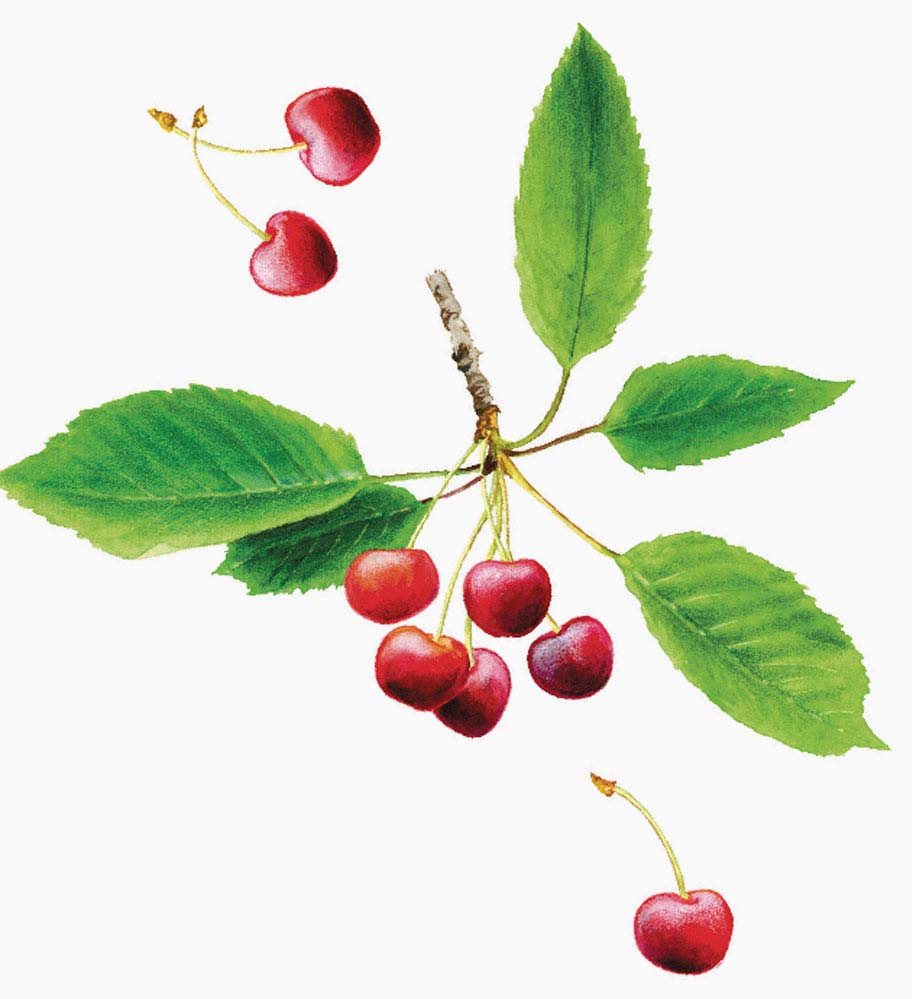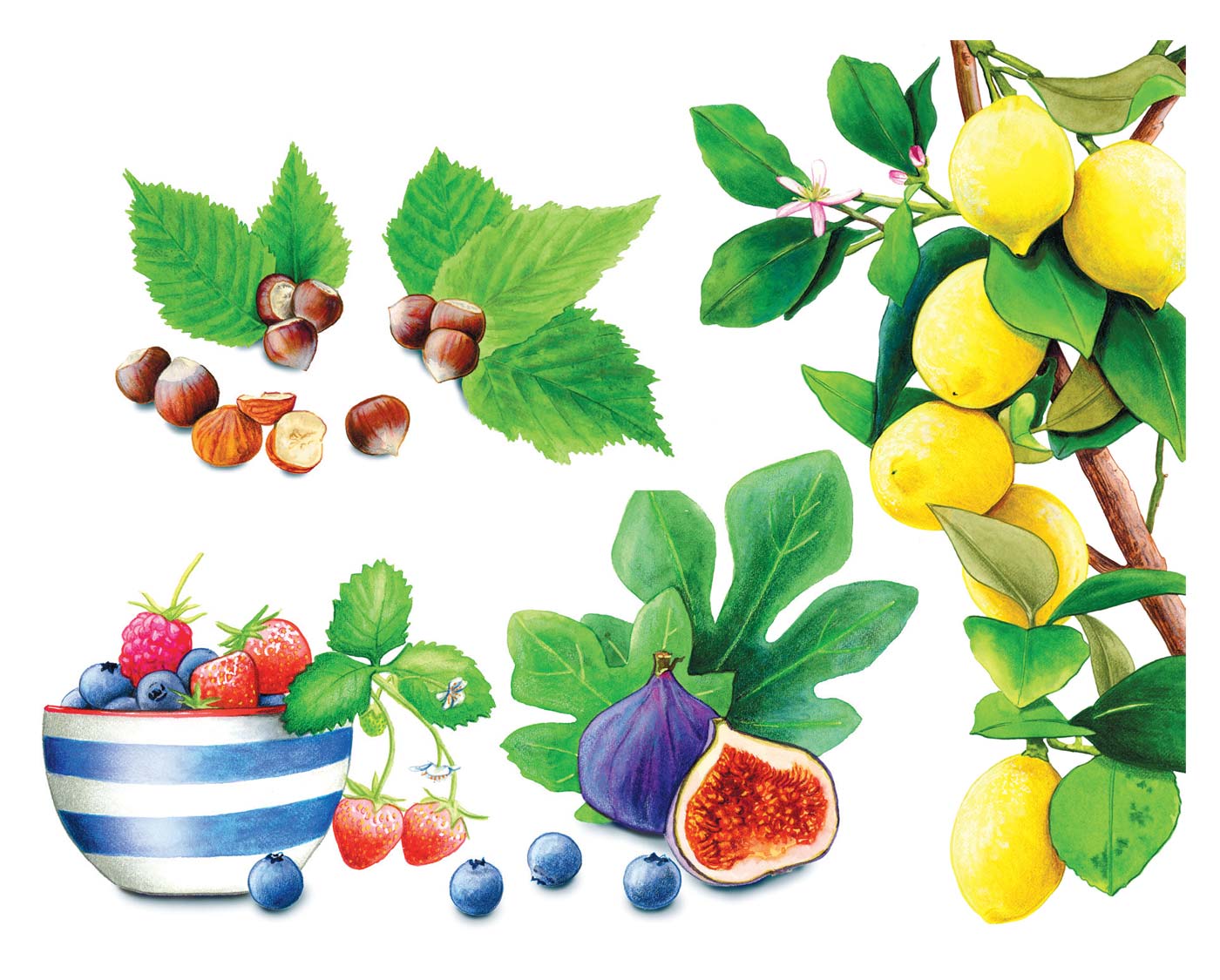Backyard Fruit
If “good fences make good neighbors,” what does a fedge make?
What is a fedge? A fedge is a fence made of living plants (think “fence” + “hedge”) and, in the context of growing food, it is a food hedge. It adds beauty to your yard, provides food for you and your family, and offers many ecosystem benefits for the birds and insects. The easiest fedge to grow is one of raspberries and blackberries.
So what does a fedge make? It makes a good dessert, a good jam, a good snack, and lots of smiles.
Imagine two lawn areas divided by a property line. The property line becomes visible when the grass isn’t cut on the same day by the two neighbors or their landscape crews. Now, imagine the neighbors deciding to plant a fedge on the property line, to start growing food, shrinking their lawns, and sharing in the abundance of raspberries and blackberries that fruit in the summer.
When one of the neighbors notices the berries are ripening, they can let the other neighbor know it’s time for picking. They can enjoy the fruit and enjoy the sounds of the birds chirping in the morning, perched in the fedge. They can share dessert and jam recipes and eat together, sharing their delicacies. How much more vibrant is the landscape of their home and their neighborhood. The fedge can change your life, and the life of your neighborhood, too.
Aside from raspberries and blackberries, what else could you grow in your yard? Consider strawberries, blueberries, cherries, peaches, pears, and pawpaws, to name just a few.
Let’s start with strawberries. The month of June is known to many Native American tribes as the month of the “Strawberry Moon” as it was the month when most wild strawberries began to ripen. Wild strawberries are smaller and sweeter than today’s cultivated varieties. Ozark Beauty is my favorite everbearing variety to plant, harvest, and eat. They typically fruit several times, in late spring, early summer, and fall. As soon as the fruit turns uniform red and has a delicious strawberry smell and a medium firmness, it’s ready to be picked. Eat them fresh from the plant or slice them up in a salad or make a strawberry jam or ice cream. Delicious and nutritious.
A unique type of fruit tree to add to your landscape is the pawpaw. Pawpaw trees are part of a mainly tropical plant family and they produce the largest edible fruit native to North America. The pawpaw is relatively pest-free and likes to grow in areas that are protected from high wind in the winter. When you buy seedlings in a local nursery, buy at least two for cross-pollination. The tree’s fruit is typically harvested in August-September, when it is soft and the skin begins to turn yellow and brown. The flavor is a cross between banana and mango, with a buttery texture, hence the name “custard apple.”
AS WE PLANT MORE FOOD IN OUR YARDS AND INCREASE THE BIODIVERSITY OF PLANTS, INSECTS, AND ANIMALS, WE CONNECT WITH THE NATURAL WORLD.
Both blueberries and cranberries grow well in New Jersey landscapes, especially if you have full sun. The blueberry became the official state fruit of New Jersey in 2004. It was in Whitesbog, New Jersey, that the blueberry was first cultivated in 1912 by Elizabeth White. Whitesbog is also the home of cranberry production. Both berries have similar soil requirements in that they require acidic soil conditions. My favorite blueberry varieties are the Sweetheart (early-season harvest) and the Jersey blueberry (late-season harvest). The Jersey blueberry is one of the oldest and most widely grown blueberry varieties. The berries are dark blue, medium in size, and very sweet. When planting different varieties, think about the harvest times so that you can enjoy blueberries throughout the summer months, instead of having all the plants fruiting at the same time.
In addition to fruit, you can add diversity in food to your yard by including hazelnuts. American hazelnut (American filbert), Corylus americana, is a native shrub that doesn’t require a lot of space. A hazelnut shrub is not able to create nuts with its own pollen, so plant at least two shrubs near each other. The nuts are typically harvested in late summer. Better yet, plant several hazelnut shrubs in a second fedge, on the other side of your property, and share with a second neighbor.
As we plant more food in our yards and increase the biodiversity of plants, insects, and animals, we connect with the natural world, become immersed in nature, and realize that we ARE nature. Local ecological awareness enables us to better relate to and grow with the natural world, creating abundance at our doorsteps, in the ground, or in pots and containers. Fig trees, Meyer lemon trees, lime and lemon trees all grow well in big pots. Bring them outside in April when it warms up and bring them indoors in November for the winter. During the summer, enjoy the fresh juice of limes and lemons in your lemonade and guacamole.
As your backyard landscape invites you to dance with nature, be creative and inspired by what you love to eat. Add food production to your side yard and front yard too. If your “yard” is a small patio or balcony, plant in pots. Be present to observe the precious moments of a plant’s life cycle of birth, growth, flowering beauty, fruiting, and then dormancy, until the next year of growth begins again. Attention in the present moment provides the insight for the intention for what you bring forth in the future. Learn from the seasons about the impermanence, the transience of life, and that these seasonal cycles are the foundation of food production.
“In the past, we have asked one thing of our gardens: that they be pretty. Now they have to support life, sequester carbon, feed pollinators, and manage water,” suggests Doug Tallamy, author of Bringing Nature Home [Timber Press, 2009] and Nature’s Best Hope [Timber Press, 2020]. By replacing some lawn areas in your yard with fruit and nut production, you can do your part in creating a brighter and healthier future for yourself and for all life on this planet—and enjoy some wonderful food at the same time. Be part of the solution, be more than a consumer, be a producer. Start now.

LEARN MORE:
Homegrown National Park
This grassroots call-to-action offers resources and information to encourage the regeneration of biodiversity and ecosystem function by the planting of more native plants and creation of new ecological networks. homegrownnationalpark.org
Lee Reich
The author of Landscaping with Fruit and Uncommon Fruits for Every Garden, Reich is considered the home gardener’s modern-day sage of fruit wisdom. His website offers knowledge and guidance for growing fruit. leereich.com
NJ Native Plant Society
This statewide nonprofit is dedicated “to the appreciation, protection, and study of the native flora of New Jersey.” Its website provides information and resources on plants native to New Jersey. npsnj.org
The Xerces Society
This international nonprofit science-based organization protects the natural world through the conservation of invertebrates and their habitats. Their key program areas are pollinator conservation, endangered species conservation, and reducing pesticide use and impacts.xerces.org
A selection of garden centers and farms that offer citrus, berries, and other fruit for your yard:
Alpine Nursery and Garden Center
291 Main St, Belleville
973.450.9140
alpinenurserygardencenter.com
Bountiful Gardens
135 US Rte 206, Hillsborough, 908.526.5500
1536 Lower Ferry Rd., Ewing, 609.583.5167
1365 Lawrenceville Rd., Lawrenceville, 609.771.6690
bountifulgardens.com
Chesterfield Organic Orchards
258 Crosswicks-Ellisdale Rd, Chesterfield
609.847.9066
chesterfieldorchards.com
DiMeo Farms (blueberries)
3101 Nesco Rd, Hammonton
609.561.5905
dimeofarms.com
Plant Detectives
45 US Rte 206, Chester
908.879.6577
plantdetectives.com
Wild Ridge Plants
170 Mountain Rd, Alpha
908.235.7622
wildridgeplants.com





